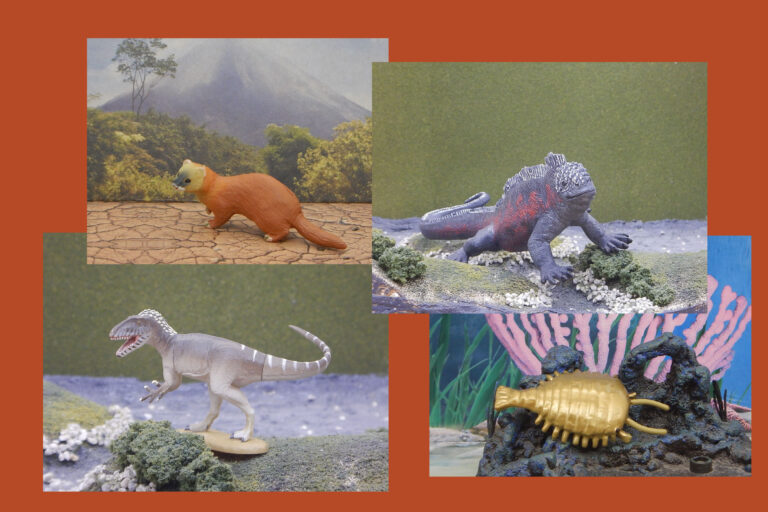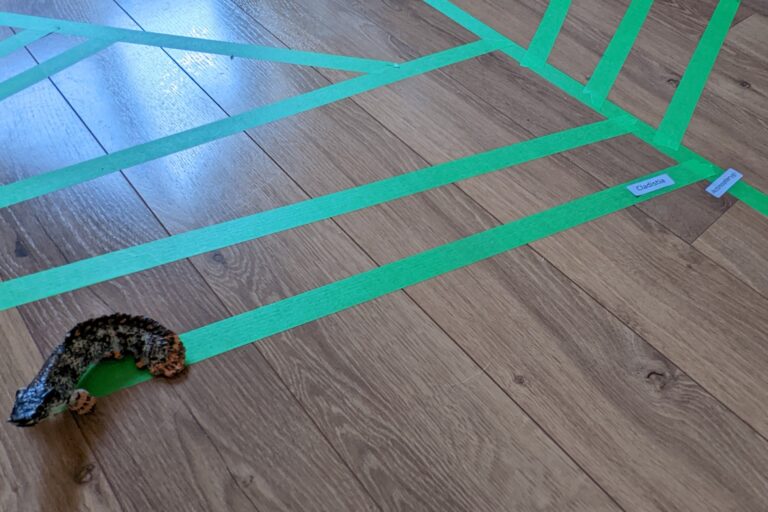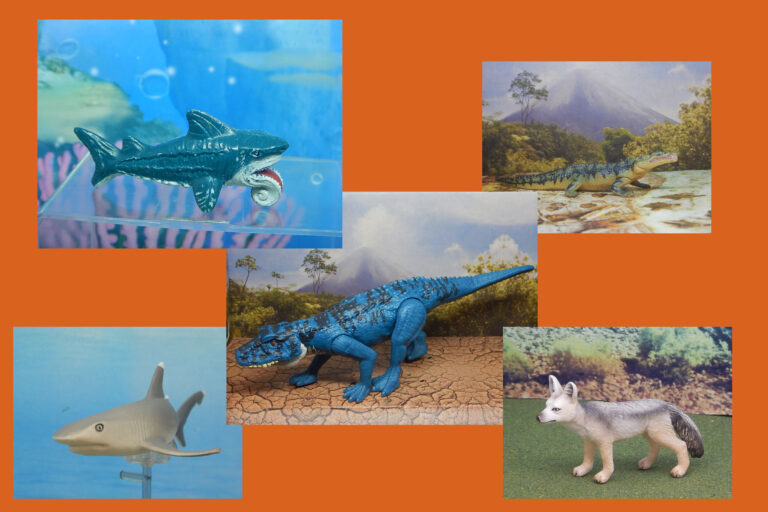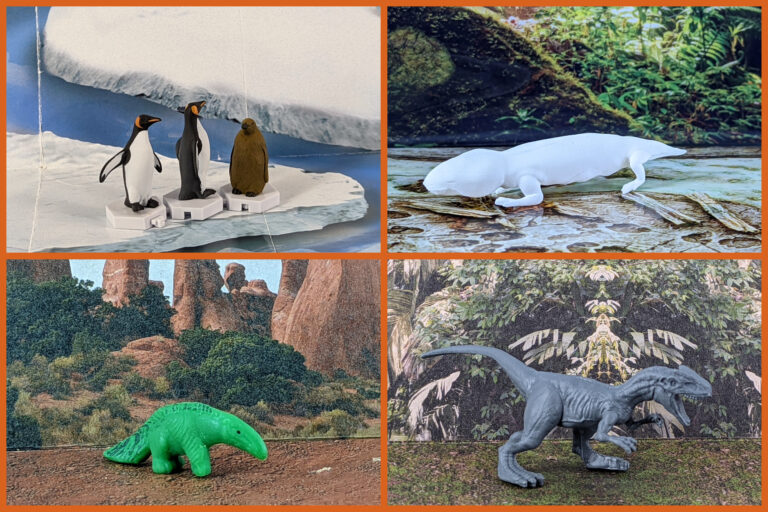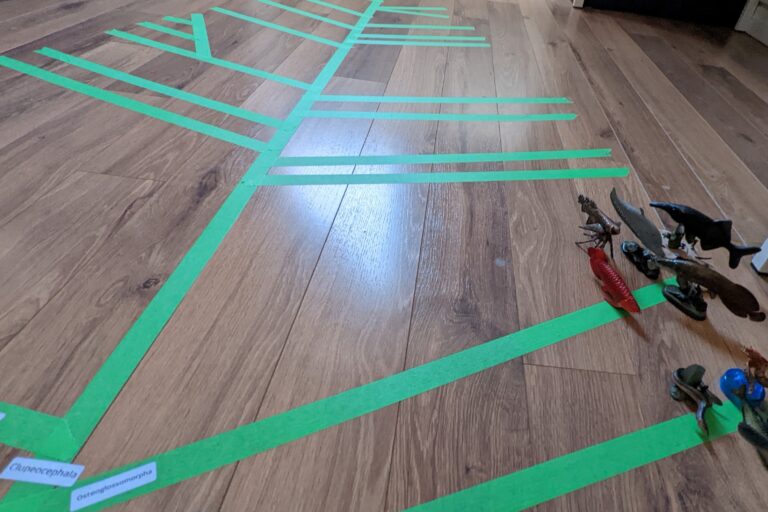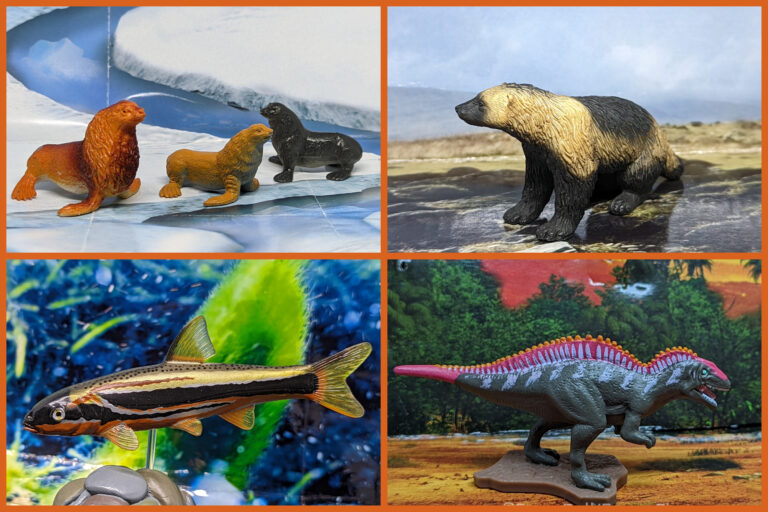We’re looking at a clade again today, and as far as clades go…I have been excited and dreading it all at the same time. As the title says, it is the crown group Cladistia, which includes the modern bichirs and reedfish and their fossil relatives. I’m excited because as I’m sure I’ve mentioned before, bichirs are easily my favorite fish of all time. Dreading because, well…not a whole lot to say. I may be a fan, but I’m no expert. I’ll do what I can.


Cladistia is the basal-most living ray-fin fish clade, with the living Polypteriformes now found only in Africa but fossils are also known from South America as well; most of these would be from the Cretaceous to (of course) now. But as a group, cladistia fossils are known from much earlier…the Carboniferous! And for the longest time, that was about what we knew–fossils of fish like Discoserra in the order Guildayichthyiformes are known from the Mississippian of Montana. So we had a really, really long gap. But only a few years ago, in 2017, a few late Triassic/early Jurassic taxa were identified as being part of the Cladistia. This group is known as the Scanilepiformes, and includes Fukangichthys and Beishanichthys from China and Scanilepis from Sweden and Norway. So at least we don’t have quite the long ghost lineage we once did.


It seems that there are a few specific shared characteristics that unite the group, including a parasphenoid extending the length of the braincase, a row of post-spiracular bones, heterocercal tails, and thick lobe-like paired fins. They also have functioning lungs and ganoid scales; many of their features are shared or convergent with other ‘primitive’ living fish, and this has lead to a great deal of taxonomic confusion. They have been variously included within the Sarcopterygii (lungfish and coelacanths), Chondrostei (sturgeon and paddlefish), and even their own kind-of class, the Branchiopterygii. Current understanding, based on molecular and physical studies, seems to have found their place as a group among the ray-fin fish.


Modern cladistians are very derived from that basal ancestry, and while those cladistian features are of course present, they have also evolved some very distinct features (which probably added to the challenge of identifying their ancestry). This includes the numerous dorsal finlets (as opposed to a continuous fin) that gives the group it’s name (Polypterus means ‘many wings’) and a protocercal tail (the caudal fin extends around the tip of the body). They are also pretty neat in some other features–like feathery gills as hatchlings, and their obligate atmospheric air-breathing. They are generally freshwater (maybe a little brackish, especially ropefish) and live in rivers, lakes, swamps, floodplains and estuaries. They are pretty adaptable and opportunistic hunters, using specialized nostril tubules (like on moray eels) to find their prey.
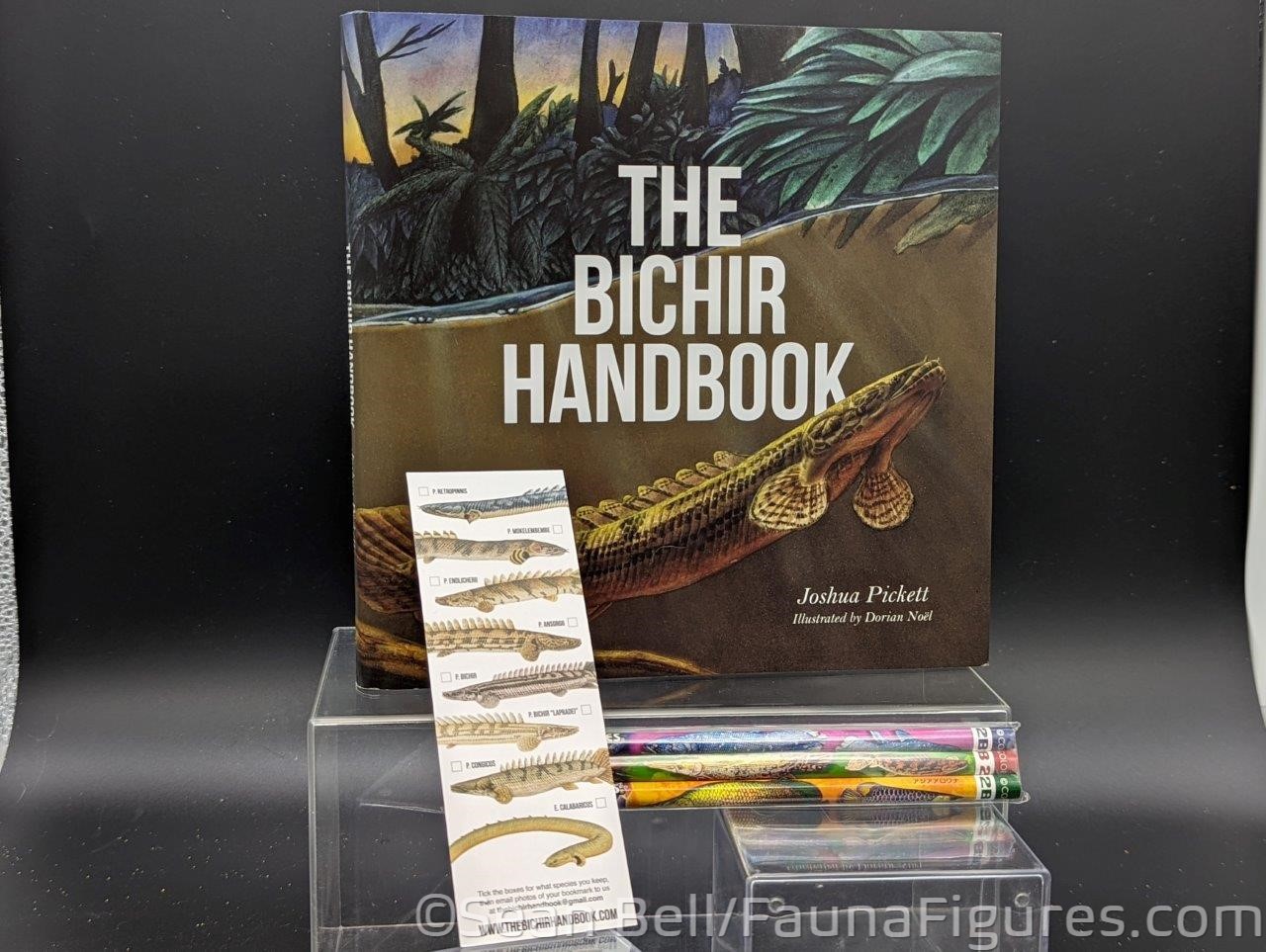
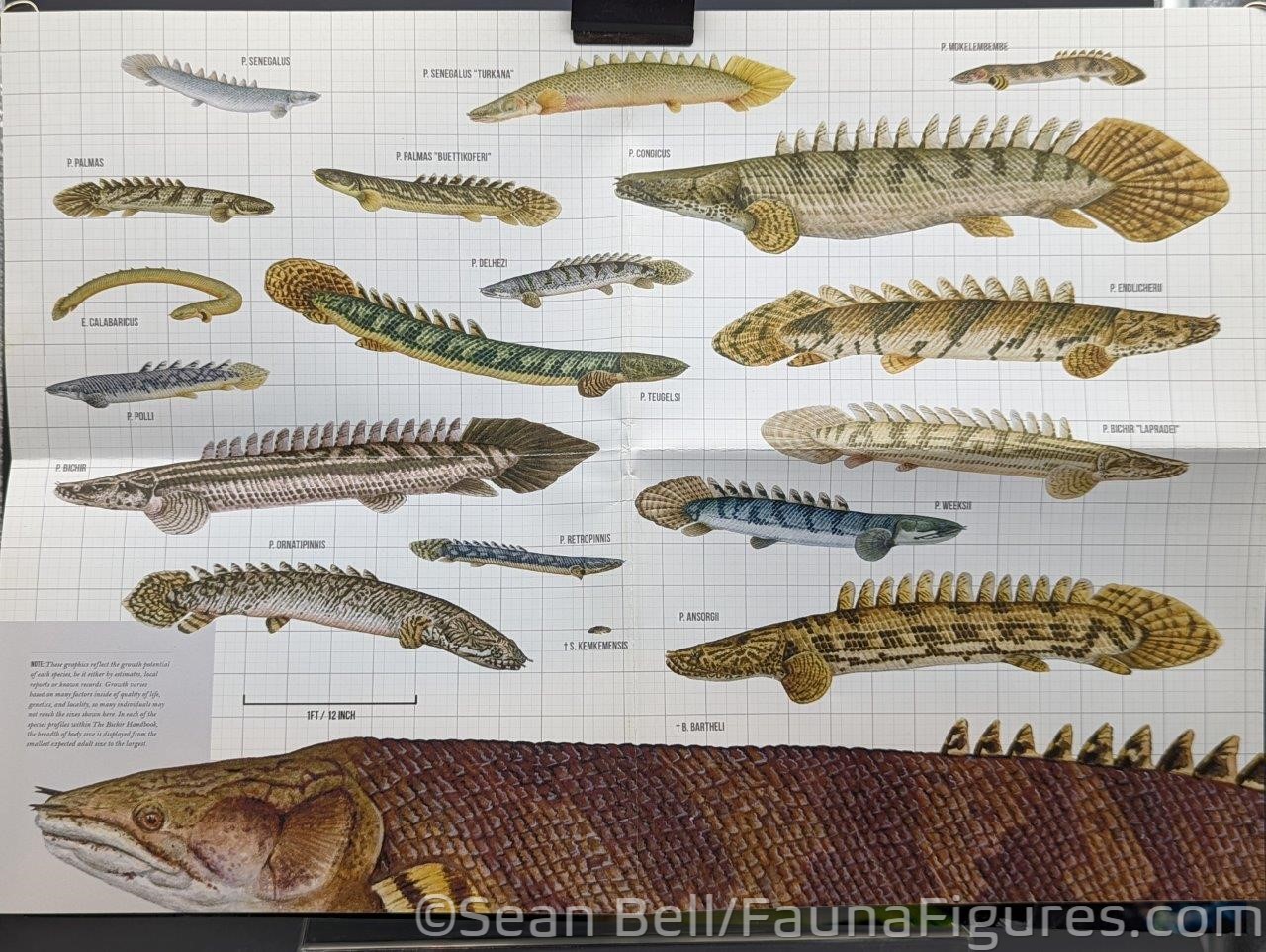
I first met these animals in a pet store when I was twelve, and even basic information was terribly difficult to come by (no internet, no access to international journals…) I have been fascinated by them ever since, and have maintained a variety of species in home aquaria for most of the years since. I have found them (generally) peaceable (if voracious) and more or less sociable with each other (or at least disinterested). And I unashamedly anthropomorphize their behaviours into personalities although I think most fish keepers do that. I do appreciate that these animals are becoming slowly more familiar with people; most are bred in captivity which has improved access to keep or at least see them in stores, and they always get a great reception due to their very primitive look (a common trade name is ‘dinosaur bichir’)

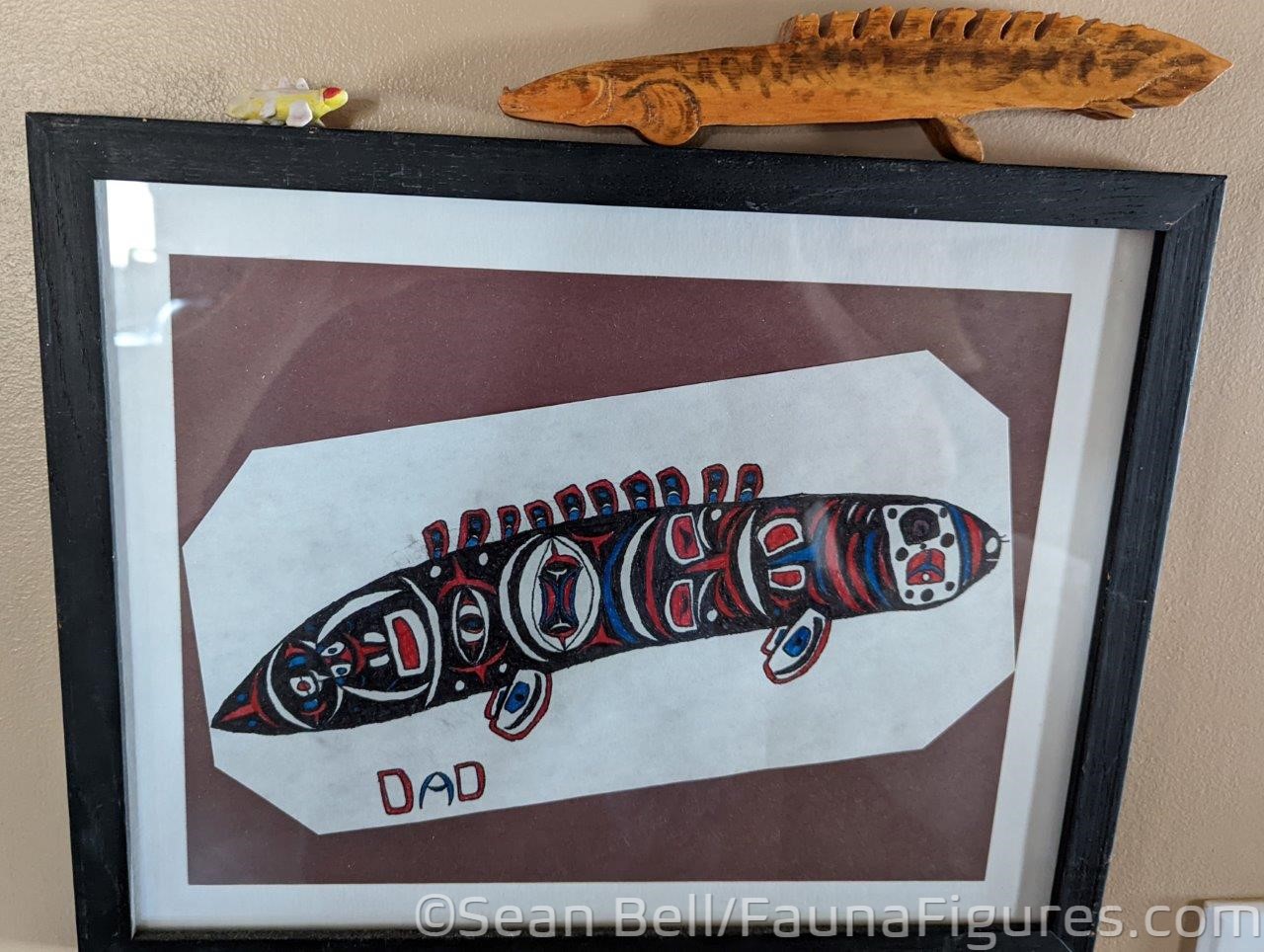
Overall, the cladistians are not especially common as figures–Japan has made a few, all of a single species. Any others are…because I had them made for my line when I ran the online store. I really hope that some company will take notice of these animals…and maybe even some of the fossil ones. The usual modern species Polypterus endlicheri is cool, but there are some with even more impressive patterns and shapes…I’d love to see more of that. I’m also not holding my breath for fossil species (even if many of the Scanilepiformes are very weird looking) but it seems like the giant Bawitius could maybe find a place in a line where Spinosaurus is present (they were kind of contemporaneous) and also, at 2m – 3m long it’s pretty impressive. Or Serenoichthys–this was a bichir relative that was very compressed in shape and very small–we could easily have life size models! Either way, a great group with not enough figures (but the ones we have might work with the right size Creatceous African archosaurs for scenes if that’s your thing).
Also, 15 years ago I came across a ropefish gotaku printing model and it was sold out and discontinued before I could get one…if anyone knows how to get one, find me on Twitter!

